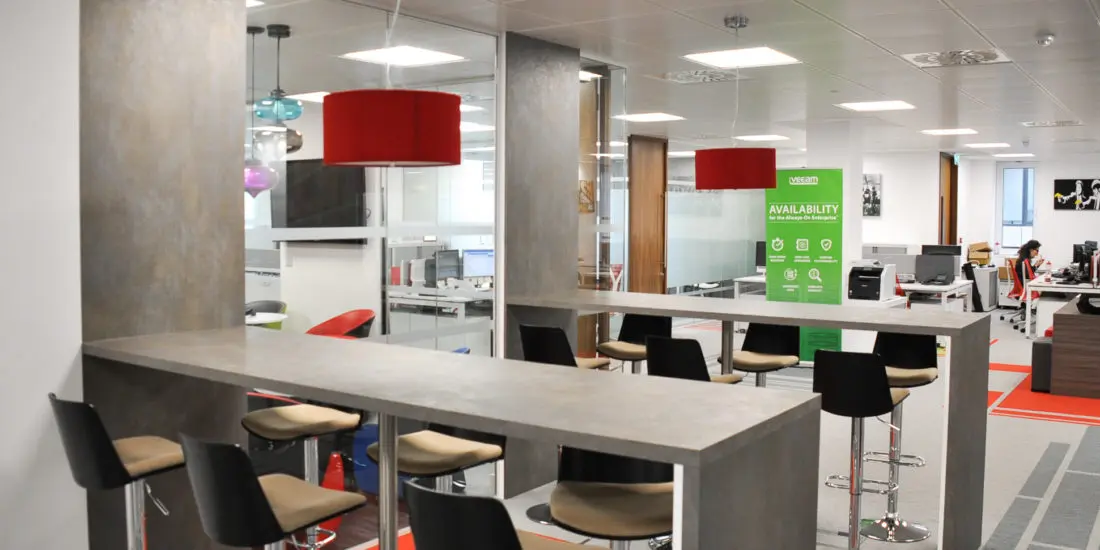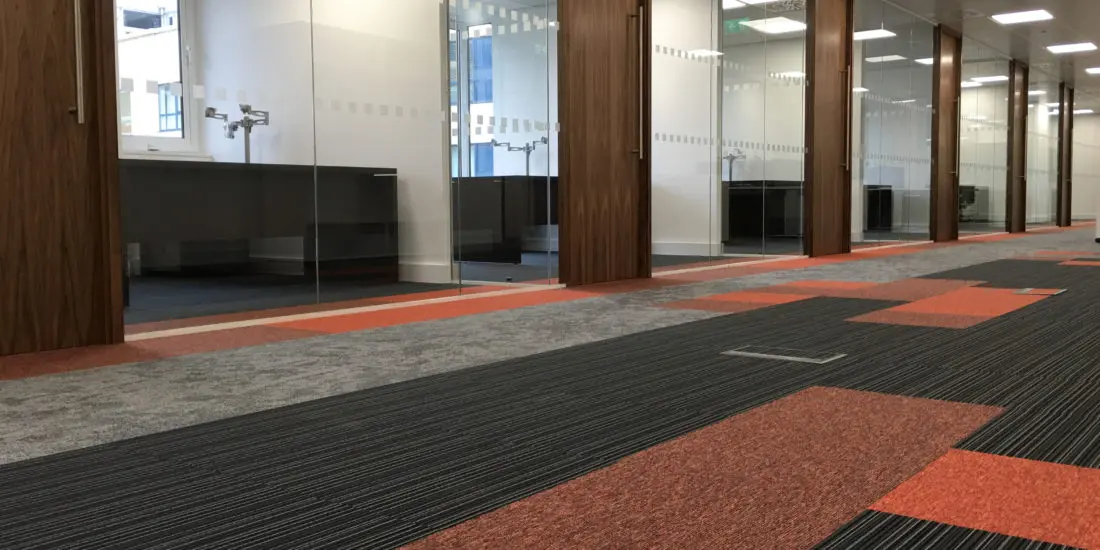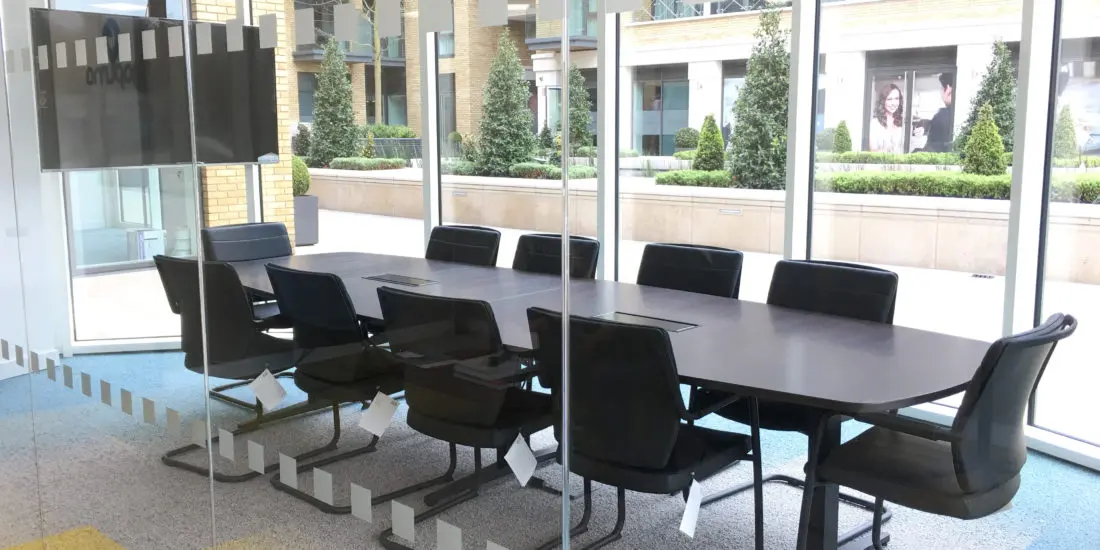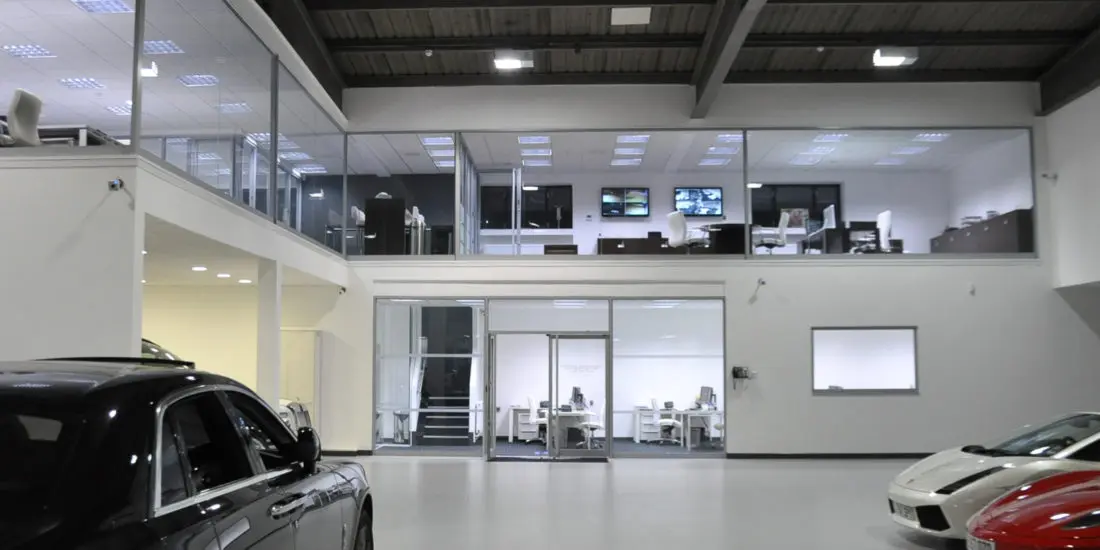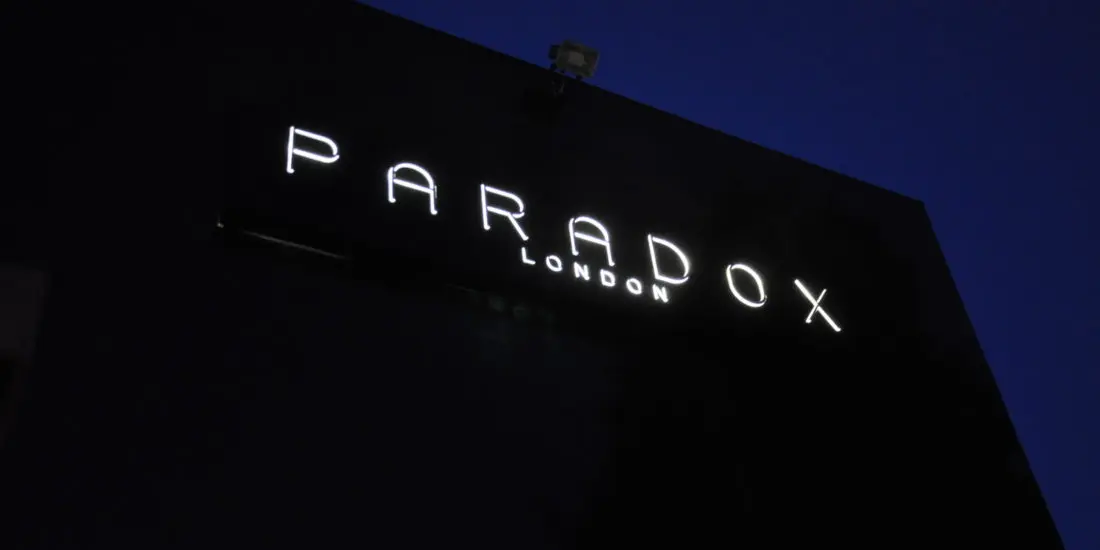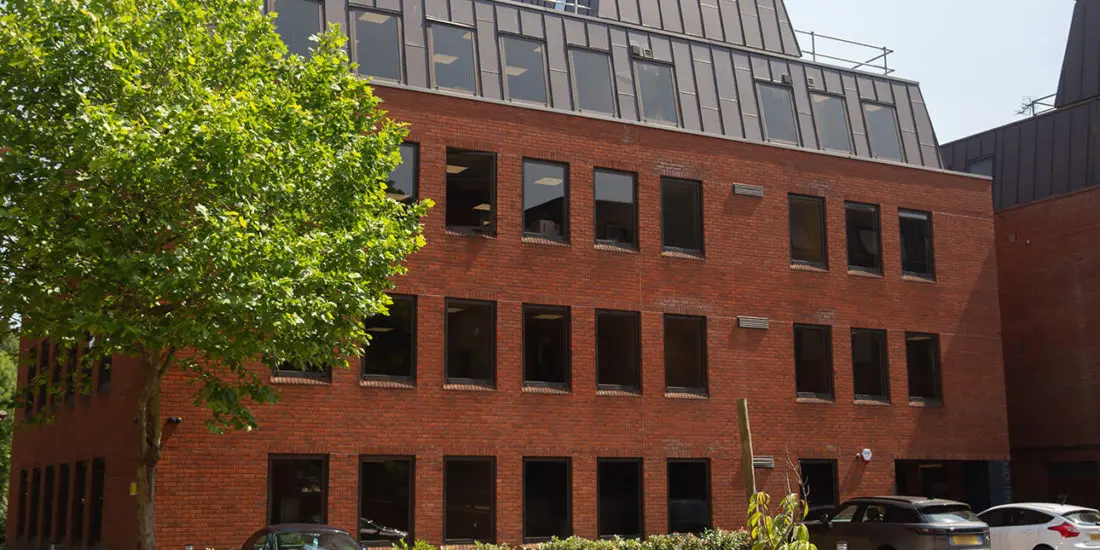Modern office refits change traditional workspaces into vibrant environments that adjust to progressing business needs.
Smart design solutions incorporate flexible layouts with collaborative
zones and private areas, whilst sustainable
materials and tech-enabled features improve productivity and employee
well-being.
Cost-effective
strategies like modular furniture and cloud-based
tools maximise space utilisation, creating future-ready
offices that elevate engagement.
Organisations embracing these innovative
approaches position themselves to thrive in today's rapidly changing workplace
terrain.
The Rise of Dynamic
Workspaces in 2024
As businesses continue to progress in
2025, lively workspaces have emerged
as the cornerstone of modern office
design. Innovative design principles are reshaping traditional office
environments into versatile hubs that prioritise both productivity and employee well-being. Gone are the days of rigid
cubicle farms and corner offices.
This workspace evolution reflects a
deeper understanding of how people actually work. Open floor plans now seamlessly blend with cosy collaboration zones
while tech-enabled meeting spaces support hybrid teams. Forward-thinking
companies are embracing ergonomic furniture, standing desks and lounge areas
that can change at a moment's notice. The integration of state-of-the-art technology like VR conferencing and AI-powered
scheduling tools further amplifies the flexibility of these spaces. It's clear
that the future of work isn't just
about where we work - it's about how we work together. The incorporation of biophilic design elements has become essential
in creating environments that boost employee morale and enhance overall
workplace satisfaction.
Understanding Modern Office
Refit Requirements
Modern office refits demand far more strategic thinking than simply
selecting new furniture and paint colours. Today's workspace transformations
require thorough office assessments
that evaluate everything from structural integrity to technological
infrastructure while considering the changing needs of an agile workforce.
Successful renovation planning encompasses multiple layers of consideration, from compliance with building codes to the integration of smart office systems. Organisations must balance practical requirements like efficient space utilisation and ergonomic design with elements that encourage collaboration and reflect company culture. The process involves careful coordination of various elements, including sustainable materials, flexible furniture solutions, and state-of-the-art technology integration. Intelligent layout design has proven to significantly boost employee communication and collaboration in modern workplaces. By approaching office refits with a strategic mindset, companies can create versatile environments that support both current operations and future growth while maintaining employee satisfaction and productivity.

Key Design Elements for
Flexible Office Spaces
Successful flexible office spaces revolve around thoughtfully designed elements that seamlessly blend form with
function. The modern workplace thrives on versatile solutions like modular furniture that can reshape
spaces based on changing team needs. Smart
acoustic design plays a vital role in creating environments where
collaboration and focused work can coexist harmoniously.
Today's flexible offices incorporate tech-integrated zones alongside
peaceful breakout areas, striking the perfect balance between connectivity and
calm. Natural elements weave through these spaces, with biophilic design elements breathing life into every corner.
Thoughtfully placed pods and booths offer private havens for deep work, while open-plan areas encourage spontaneous
creativity. This fluid approach to office design isn't just about aesthetics -
it's about creating environments where every employee can find their perfect
spot to shine. Space utilisation analysis helps organisations
optimise their workplace layout to maximise both efficiency and employee
satisfaction.
Cost-Effective Strategies for
Workspace Transformation
While altering a workspace may seem like
an intimidating investment, organisations can implement numerous cost-effective strategies that deliver
impressive results without breaking the bank. Modern cost-saving innovations
like cloud-based tools and
automation systems are changing traditional offices into agile environments
that enhance employee engagement while reducing operational expenses.
Smart organisations are embracing hybrid work models and shared workspaces, effectively cutting real estate costs while creating lively environments that employees actually enjoy. By implementing resource booking systems and hot-desking arrangements, companies can maximise space utilisation and minimise waste. The cherry on top? These changes often pay for themselves through reduced utility bills, decreased maintenance costs, and improved productivity. Tech-savvy solutions like virtual meeting tools and workflow automation are proving that sometimes the smartest workspace investments are the ones that help you spend less. Research shows that top performers spend approximately 45% of their time engaged in collaborative tasks, making strategic workspace design crucial for maximising team efficiency.

Creating Collaborative Zones
and Private Areas
Beyond implementing cost-saving measures,
the art of creating lively workspaces
hinges on striking the perfect balance between collaborative zones and private
areas. Forward-thinking companies recognise that different tasks demand
different environments, and modern office design must cater to this reality.
Collaborative spaces shine with interactive displays and flexible furniture arrangements that spark creativity and encourage those "aha!" moments. These zones buzz with energy as teams huddle around projects, while nearby private zones offer peaceful retreats for focused work. Think cosy phone booths for important calls and quiet pods where introverts can recharge their social batteries. The sweet spot lies in seamlessly blending these contrasting areas, creating an ecosystem where both group brainstorming and deep solo work can thrive simultaneously. Strategic zoning proves essential for large offices seeking to maintain productivity while accommodating diverse work styles.
Technology Integration for
Hybrid Work Models
As companies adopt the realities of hybrid work, advanced technology integration has become the backbone of modern
office changes. The focus lies on implementing essential technology tools that
seamlessly bridge the gap between in-office and remote collaboration. From
sturdy video conferencing systems
and cloud storage solutions to AI-powered assistants, organisations
are altering their workspaces into tech-enabled hubs that promote productivity
and connection.
The shift towards hybrid models demands high-speed networks, interactive whiteboards, and smart booking systems that make the office experience both efficient and engaging. Companies recognise that investing in state-of-the-art technology isn't just a nice-to-have - it's a must-have. With 75% of professionals calling for improved tech infrastructure and 96% enthusiastic for intelligent workplace solutions, the message is clear: technology integration is reshaping how we work, connect, and succeed in the modern office. To support these evolving workplace demands, businesses are implementing structured cabling systems that serve as the foundation for reliable network communications and seamless connectivity.

Sustainable Solutions in
Office Refitting
Modern office refitting has embraced an
extraordinary shift towards sustainable
solutions that benefit both the planet and the bottom line. Today's
businesses are utilising recycled
materials in innovative ways, from repurposed wooden fixtures to reclaimed
brick accent walls that tell a story of environmental responsibility.
The alteration extends beyond aesthetics with eco-friendly paints that keep indoor air pristine whilst energy-efficient LED lighting systems work in harmony with natural daylight. Smart design choices include modular furniture that adjusts to changing needs and open-plan layouts that minimise waste during renovations. Companies are uncovering that green initiatives like solar panels and mechanised lighting systems don't just reduce their carbon footprint—they slash operational costs, too. Many organisations are opting for cost-effective vinyl flooring to combine sustainability with practical maintenance in high-traffic areas. It's a win-win approach where sustainability meets smart business sense, proving that going green isn't just trendy—it's revolutionary.
Maximising Space Efficiency
Through Smart Design
Smart space optimisation has become the cornerstone of contemporary office design, with data revealing that a staggering 87% of organisations are missing opportunities to maximise their workspace potential. Through innovative design solutions and data-driven strategies, companies are converting underutilised spaces into adaptable environments that encourage collaboration and productivity. Modern space optimisation approaches focus on creating flexible areas that can serve multiple purposes while maintaining ideal utilisation rates throughout the workweek. Fire rated partitions provide essential safety features while maintaining design flexibility for modern workspace configurations.
- Convert ghost-town private offices into lively collaboration hubs
- Say goodbye to those sad, empty meeting rooms that echo with missed opportunities
- Welcome the future with smart sensors that turn space usage data into design gold
- Accept the freedom of fluid spaces that breathe with your team's changing needs
- Create magnetic destinations that pull people back to the office naturally

Building Adaptable
Infrastructure for Future Growth
While yesterday's office infrastructure
focused primarily on immediate needs, today's forward-thinking organisations
recognise the imperative of building flexible
spaces that seamlessly adjust with technological advancement and workforce
fluctuations.
Creating versatile infrastructure means
thinking beyond traditional office layouts and embracing modular designs that can evolve as companies grow. Smart
organisations are integrating high-capacity
broadband, IoT systems, and
future-ready mechanical spaces while leaving room for emerging technologies
like 5G and enhanced reality. This tech-forward approach isn't just about
keeping up with the times - it's about staying ahead of the curve. The most
successful future growth strategies incorporate sustainable features like advanced air filtration, energy-efficient
systems, and flexible workstations that can be modified to hybrid work models without missing a beat. Many companies are
implementing raised access flooring to facilitate easier
maintenance and quick reconfiguration of workspace utilities as organisational
needs change.
Wellness Features in
Contemporary Office Refits
Today's leading office refits prioritise employee wellness through thoughtfully integrated features that change traditional workspaces into lively, health-conscious environments. Through ergonomic innovation and biophilic integration, modern offices are developing into spaces that nurture both physical and mental well-being. Standing desks seamlessly shift between positions while smart lighting systems adjust to natural circadian rhythms. Living walls and indoor gardens bring nature indoors, creating a revitalising atmosphere that enhances creativity and reduces stress levels. Smart technology integration enables automated environmental controls that maximise comfort and efficiency throughout the workspace.
- Feel the tension melt away in dedicated wellness rooms designed for meditation and mindfulness
- Experience the joy of working in spaces flooded with natural light and views of nature
- Breathe easier knowing advanced air filtration systems protect your health
- Move freely between collaborative zones and quiet spaces that conform to your needs
- Recharge your spirit in biophilic areas that connect you with natural elements

Measuring ROI on Flexible
Office Investments
Investing in flexible office solutions demands a clear understanding of return on investment metrics to justify
the significant upfront costs. Modern ROI measurement strategies extend beyond
traditional financial calculations to encompass occupancy density, employee
satisfaction, and long-term
portfolio value. Property owners who implement smart workplace solutions
often uncover substantial returns through premium
rental rates and reduced vacancy periods.
Savvy investors analyse both quantitative
and qualitative factors when evaluating their investment strategies. Pre- and
post-occupancy assessments provide essential knowledge into space utilisation
while employee feedback helps fine-tune workspace configurations. The data
shows that flexible offices consistently deliver improved property values and
increased competitiveness in the changing commercial real estate market. With
the rise of hybrid work models,
these investments position landlords to capitalise on the growing demand for
versatile workspaces.
Conclusion
Like a well-choreographed dance, the
modern office refit blends form and function to create spaces that adjust with
changing business needs. Companies that welcome flexible design principles whilst prioritising employee wellness and collaboration will thrive in tomorrow's
workplace environment. Through smart planning, sustainable practices, and versatile infrastructure, organisations
can change their offices into fluid settings that inspire innovation and
nurture growth for years to come.







